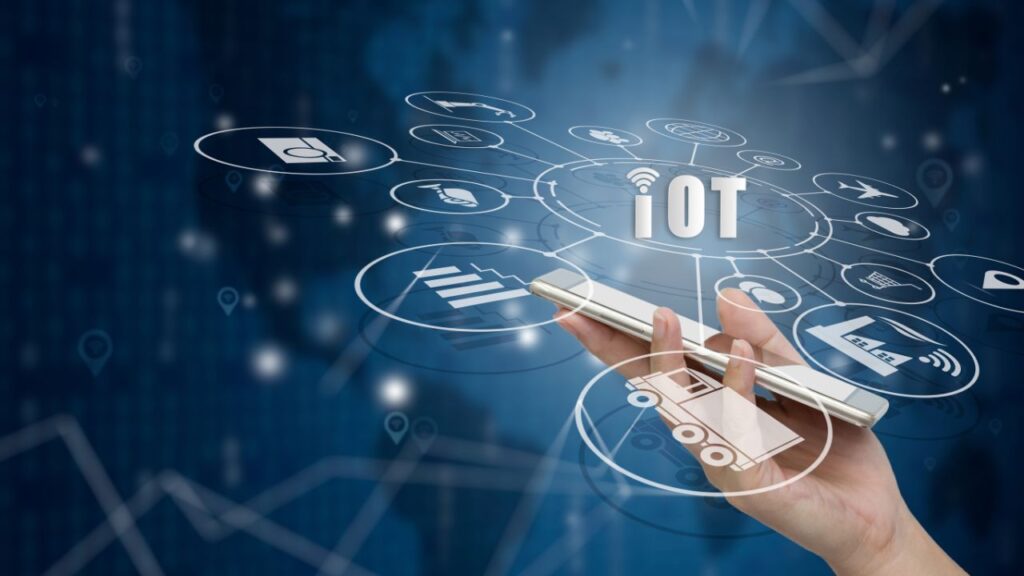February 3, 2025
The Internet of Things (IoT) is transforming the way we interact with technology, bridging the gap between the physical and digital worlds. With billions of devices connected globally, IoT is driving efficiency, innovation, and convenience across industries. In this blog, we explore the essence of IoT, its key applications, challenges, and strategies for businesses to maximize its potential.
Understanding IoT
IoT refers to the network of physical objects embedded with sensors, software, and connectivity, enabling them to collect and exchange data. From smart home devices to industrial machinery, IoT-powered systems are revolutionizing how information is gathered and utilized.
Key Applications of IoT
- Smart Homes:
- IoT devices like smart thermostats, lighting systems, and security cameras enhance comfort, security, and energy efficiency.
- Voice-controlled assistants such as Amazon Alexa and Google Home integrate seamlessly with other devices for convenience.
- Healthcare Innovations:
- Wearable devices monitor health metrics such as heart rate, blood pressure, and sleep patterns in real time.
- IoT-enabled medical equipment supports remote patient monitoring and telemedicine, improving healthcare access and outcomes.
- Industrial IoT (IIoT):
- Smart factories leverage IoT sensors for predictive maintenance, minimizing downtime and operational costs.
- IoT-powered supply chains provide real-time tracking and inventory management, enhancing efficiency.
- Smart Cities:
- IoT solutions optimize urban services like traffic management, waste collection, and energy distribution.
- Connected infrastructure improves public safety and enhances the quality of life for residents.
- Agriculture and Farming:
- IoT devices monitor soil moisture, weather conditions, and crop health, enabling precision agriculture.
- Automated irrigation systems conserve water and boost yields.
Challenges in IoT Adoption
- Data Security and Privacy:
- With vast amounts of data generated, ensuring secure transmission and storage is paramount.
- Businesses must address concerns over data breaches and unauthorized access.
- Interoperability:
- The lack of standardized protocols can hinder seamless communication between devices from different manufacturers.
- Scalability:
- As IoT networks grow, maintaining efficiency and managing increased data volumes become challenging.
- High Implementation Costs:
- Deploying IoT solutions requires significant investment in infrastructure and expertise.
Strategies for Maximizing IoT Potential
- Prioritize Security:
- Implement end-to-end encryption, regular updates, and robust authentication mechanisms to protect IoT systems.
- Leverage Data Analytics:
- Use advanced analytics tools to extract actionable insights from IoT data, enabling informed decision-making.
- Embrace Standardization:
- Adopt industry standards to ensure interoperability and reduce complexities in device integration.
- Invest in Scalable Solutions:
- Choose platforms and infrastructure that can adapt to growing networks and evolving technologies.
- Foster Innovation:
- Encourage cross-industry collaboration and experimentation to uncover new use cases and applications.
The Future of IoT
The potential of IoT is limitless, with advancements in AI, 5G, and edge computing set to amplify its impact. IoT will continue to shape smart environments, improve operational efficiency, and drive personalized experiences. As the ecosystem evolves, businesses that embrace IoT will gain a competitive edge and unlock new opportunities for growth.
Conclusion
The Internet of Things is not just a technological trend; it is a cornerstone of the connected future. By addressing challenges and strategically implementing IoT solutions, businesses can harness its transformative power to innovate, optimize, and thrive. The journey to a smarter, more connected world begins with IoT.

